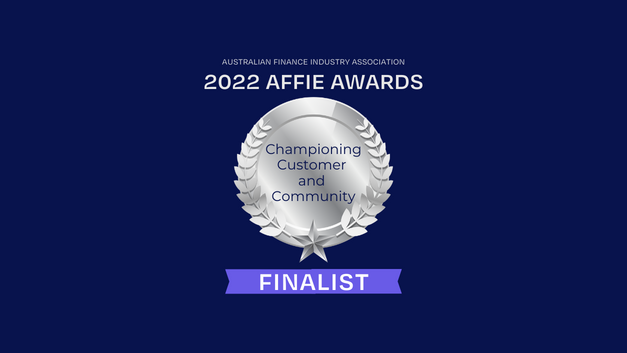As the education market undergoes its biggest change in recent history, there are ample opportunities for providers with the right road map to build successful businesses.
There’s no doubt the education market is undergoing transformational change. As universities grapple with financial challenges, the demand for vocational training, short courses, online education and job-ready skills is on the rise. The global online learning market is forecast to grow from $130 billion to more than $470 billion by 2026.1 While not every provider will be the next Go1, this is a major opportunity for Australian education providers who can bring together the education expertise and business acumen needed to build a successful vocational training business in a competitive market. The key lies in understanding where to focus and how to leverage third-party skills to supercharge your growth. This paper brings together unique insights from industry experts and successful education businesses to help you do that. Here, you will find the 9 essentials for building a thriving vocational education business in Australia.
1 The Australian Financial Review, 31 March 2021
#1 Find your niche
As the gig economy continues to grow and new industries emerge, there are many opportunities for education providers to create meaningful content and grow successful businesses. At the same time, there are many traditional industries that require training, which can be delivered in new innovative ways, particularly as the move to online learning gathers pace. To help you find your niche – whether you’re starting out, optimising your existing offering or looking to diversify – consider the emotional reason behind purchasing education. People are willing to pay for education when they believe it will improve their lives in some way. With that in mind, what course can you provide to help people earn more, gain new jobs, start or grow side hustles or alternatively, achieve health or lifestyle benefits for themselves or their families? It might be something you are an expert in or something you haven’t been able to find suitable training for. If you’re taking a B2B approach – selling your course to employers who want training for their staff – what do those employers need their people to upskill in? Once you have settled on the subject, it’s crucial to consider how you can deliver it with a sustainable competitive advantage. Is it about delivering the best quality course in your subject? If so, can your audience afford to pay for that? Or can you scale your course cost-effectively and therefore make it more affordable for your target audience? Whatever your competitive advantage is, be mindful of it in the daily decisions you make for your business and the way you communicate to your audience.
“We foster a diverse professional community of individuals and companies through education, helping to build vital skills at all professional levels.
Specialising in today’s most in-demand skills we help individuals and companies to thrive in the modern economy.”
Patrick O’Brien, National Admissions Manager – Australia, General Assembly
#2 Create great course content
Meaningful content is an essential element of success for education businesses who want to grow sustainably. If you are confident there is a strong market for your course, you might be confident investing in developing it yourself. Even more so if you are a subject matter expert and have capital to spend with specialist companies experienced in building courses or have the scale to invest in resources to build your content in-house. Otherwise, you might want to test the market by licensing someone else’s content before creating your own. Content creators charge on a fixed-fee basis or they will take a percentage of your sales. Where possible, try to structure content licensing arrangements so you only pay the creator once you have been paid by a student or once a student is part way through a course (halfway for example), to protect your balance sheet against inevitable student cancellations.
You don’t want to pay for content that students don’t pay you for. For the content itself, there are some key principles:
- People want practical content that teaches them how to do things. Make your content as practical as possible, reflecting a how-to style
- Video-based experiential learning is becoming the norm, often with a video of a subject matter expert speaking to students and demonstrating the skill
- Focus on one key learning in each lesson. Explain why the skill is important, show how to do it, then do a self-paced micro test
- Wrap up the course with a more substantial assessment to summarise what the student has learned and ideally provide feedback on their results
These principles will evolve as augmented and virtual reality transform online education. This journey, which is only just beginning, offers huge opportunities for businesses who can scale their content globally. No matter how big you grow, the key metrics for measuring your content are retention, productivity and completion – tracked through your learning management system. Use this to get to know your customers and seek their feedback. Are they watching the videos? Are they doing the assessments? What is working? What’s not? In the future, artificial intelligence will handle this, assessing where a student is up to and deploying the learning they need.
“It comes down to understanding your client base and being really driven on making sure you’re delivering what they want. If that’s not working, do some more research to find a different client base and deliver a product for them.”
Richard Seaborn, former owner of WH&S More Skills
HOW TO GROW YOUR CONTENT
Once your main course is going well, look at how you can supplement it. For example, if your core course is beauty therapy training, consider what content students would need to operate their own business in the field, such as general business management or Xero software training. Reach out to your previous students to offer this and bundle it in a package for new students. Also, look into whether there’s a barrier preventing people from doing your main course. You might be able to offer an introductory course to give them the skills or confidence needed to pursue your main offering.
#3 Provide a good student experience
You need to provide a learning experience that meets your students’ expectations, which will be linked to the cost and duration of your program. Your ability to match the learning experience to your students’ expectations will evolve as you listen to their feedback. This is important because a good learning experience will encourage your students to become word-of-mouth advocates for your course, helping you build future enrolments. If you are running an online course, you need a learning management system (LMS) with a great user experience. Whether you are using a third-party LMS or your own, it needs to enhance the learning experience by being easy to use and helpful. That starts with a simple log in process and flows through to clear navigation, easy access to content and a simple way to contact course trainers. You need to ensure a timely response to student enquiries, usually via a ticketing system. Some courses include career coaches to help students with CVs and interviews, and others have an even more direct link into employment.
“It’s essential to mark assessments within an appropriate timeframe so students feel responded to and can take their next steps. The sooner you provide them with worthwhile feedback, the better.”
Jesse Saheli, Director, Career House
#4 Know your revenue streams
There are three potential revenue streams for education businesses – government, employers and students. From the early days, it’s important to develop a strategy for each as they apply to you. This paper doesn’t address government funding except to acknowledge it as a valid revenue stream, albeit not without some complications. Most RTOs will know that ongoing government funding comes with a significant degree of uncertainty as the regulatory landscape can change and the need to satisfy federal and state authorities – who can have very different funding structures – can be challenging and time consuming. Therefore, it’s well worth investigating any one-off or ongoing government funding available to you but make sure you know what it entails. Uncertainty makes it difficult to grow any business.
“Use some government funding but don’t have all your eggs in one basket. We found the fee-for-service market was more flexible. There’s not a lot that can disrupt it.”
Richard Seaborn, former owner of WH&S More Skills
#5 Set the right price
Setting the right price for your course depends on many factors. It needs to cover your costs and provide a margin so you can grow a successful business. It also needs to work for your students, which is where insider guidance is extremely valuable. Many education businesses aren’t aware of the emotional basis behind people’s education purchasing decisions. For example, people are typically happy to buy an online course off a website if it’s about $500-$600. Having a live chat function on the site often helps with this. If a course costs more than this, they will usually need one or two sales calls and will want time to consider it. It might seem a safe choice to price your course between $1000 and $2000 but this could be a lost opportunity and the difference between revenue that is sustainable or not. If you are thinking of pricing your course in this range, consider the mental calculation people make about how much your course costs and how much they can expect to gain from it in future income or other benefits. This will help you understand how much your potential students will be prepared to pay. Looking across the hundreds of vocational education businesses we service, it’s clear that students are typically happy to pay more – within a price band of $20-$75 over two years – if they don’t have to cover the entire course cost upfront. For example, if a student is paying for a $1900 course over 24 months, it will cost $20/ week. If the same course is $2900, it will cost $30/week. This small difference usually won’t impact their purchasing decision but it makes a big difference to the education business’s ability to provide meaningful content and grow over time. If you offer a solution like Study Now Pay Later, you’ll receive the entire course fee upfront less the ZeeFi service fee.
#6 Constantly generate leads
Constant lead generation via digital marketing is essential to growing a vocational education business. Use search engine marketing (SEM) from the beginning when your website won’t have any organic traffic. SEM involves using Google Ads to drive search traffic to a well-designed landing page with content that convinces people to enter their contact details so you can contact them to explain your course offering. Simultaneously, work on your search engine optimisation (SEO) so that you feature in organic search results over time. This takes longer and involves showing Google that your site is legitimate and helpful with content and backlinks. Social media will help you build your brand by following simple rules, such as the 80/20 approach where you post about others (share tips, industry news, quotes, entertaining content and so on) about 80% of the time and post about your courses roughly 20% of the time. Across SEM, SEO and social, keep the main motivator for buying education in mind. People want to improve their lives in some way – how can your messaging reflect that? If you are a B2B education provider, you will need a specific focus on reputation and referrals. This means delivering a premium product that employers are usually prepared to pay for on behalf of their staff and for the peace of mind of knowing they will get what is promised. When a referral comes in, action it straight away.
HOW TO BUY LEADS
If you are a B2C provider, buying leads is well worth considering especially when starting out. There are two main suppliers in Australia:
- Candlefox –provides leads based on people’s Google searches.
- Get Course – provides leads derived from social media campaigns as well as RTO specific sales, marketing and platform services.
#7 Understand lead conversion
Generating leads is one thing, converting them into sales is another. To do that, you need an efficient sales process in place. Firstly, make sure your leads go straight into your customer relationship management (CRM) system, such as HubSpot or Salesforce. Then, the biggest factor affecting conversions is time – the time between a lead coming in and the sales call. Without a sales background, it’s easy to think that calling as quickly as possible once an enquiry comes in will seem pushy and put people off. The opposite is true. People’s motivation to buy something drops very quickly. If they are motivated enough to provide their details via a landing page, you need to respond within an hour ideally. If your team can’t do that, the next best time is between 3pm-7pm the following day, except on Sundays. Saturday mornings between 9am and 1pm are also good times for sales calls. If the course costs more than about $600, it usually takes two sales calls to convert a lead. At this price point, people want to discuss it with their friends, colleagues or family members before deciding. The second call is best between 3-7pm Monday to Saturday, two or three days after the first call. From there, you will build a sales pipeline, where you can expect high conversions in the first week or so and then a big drop off. Some people will take months to decide, so plan out your lead nurturing approach perhaps with some relevant emails and a follow up call every four to six weeks to see how they’re going. Running a sales team takes a lot of work. At ZeeFi, we’ve observed hundreds of vocational education businesses and their sales approaches. In our experience, salespeople with an altruistic outlook, who believe in helping people via education, are highly effective. However, it is a high energy job with correspondingly high staff turnover so there’s an ongoing need to refresh your sales team. You need to train your team, record calls for compliance and make sure all team members are productive, including the team leader if you have one. Smart salespeople will know how to help people see they are worthy of the investment in their own education.
KEY METRICS BEHIND A SUCCESSFUL SALES TEAM
- A typical lead conversion rate of 5-15% is required
- If a salesperson earns $5,000/month, they need to manage 200+ leads/month
- Leads rates vary from $40–$60 each, putting lead generation cost at $8,000–$12,000/month
- TOTAL COST OF SALES = $13,000–$17,000/salesperson/month
- The salesperson needs to sell 4–5 times that ($52,000–$68,000/month) to be profitable This is a guide for an education provider with a B2C fee-for-service model.
#8 Manage student payments and cashflow
Maintaining strong cashflow is vital to running a successful vocational education business, as it enables ongoing investment in lead generation and content diversification, which are the main growth drivers. However, this need conflicts with the need to offer flexible payment options so that upfront course costs aren’t a barrier to student enrolments. Instalment payment plans are one way of doing this, but they lead to a mismatch in timing of cash in and cash out as course fees are paid in instalments over time. Thus, education providers need a range of tools to manage the competing demands of enrolments and cashflow. Many education businesses use buy-now-pay-later (BNPL) to fund course enrolments, recognising that it assists cashflow by enabling students to pay instalments over time while still delivering the full course fee to the provider upfront, less a service fee. As the payments landscape changes, there is strong student demand for BNPL driven by payment digitisation and an aversion to credit cards and interest charges. However, realising this opportunity isn’t as easy as it sounds because most BNPL providers only accept about 20% of students.
Students not accepted are easily lost to an education business, believing they can’t afford to pursue the course, looking into alternatives or losing interest. The education business can offer these students in-house instalment plans, however this is usually a clunky process for the student who is offered several different products to qualify for a payment plan option.
As an education finance specialist, ZeeFi provides a complete solution with a product combination and end-to-end service that seamlessly onboards and manages all students. With ZeeFi, education businesses can advise all students they will qualify for a payment plan immediately, at the time of enrolment. This solution makes a profound difference to education businesses, which can increase enrolments and access more working capital to fuel growth plans, all while reducing their risk.
This unique solution involves:
- Study Now Pay Later – the BNPL option specially designed for the education sector with competitive pricing and higher acceptance rates
- Payment Assist – a complete outsourced onboarding, repayment and collection service for an education provider’s own student instalment plans, with higher recovery rates and reduced costs
The process is simple. Education providers send a ZeeFi link to a student, who uses it to apply for a payment plan. ZeeFi assesses the application for the Study Now Pay Later option. If they are approved for Study Now Pay Later, ZeeFi onboards and manages the application and the education provider receives the entire course fee upfront, less ZeeFi’ service fee.
If the student doesn’t meet Study Now Pay Later qualification criteria, they will automatically be enrolled in the education business’s instalment payment plan offered via Payment Assist, which ZeeFi also manages from end-to-end. This unique solution means there is one application for the student and their enrolment is confirmed immediately. Bespoke reporting provides education businesses with all the data they need to make smarter decisions about student acquisition and how to better target their marketing efforts.
ZeeFi provides two further options to improve cashflow. It can buy an education business’s portfolio of instalment plans, releasing the revenue from existing or legacy portfolios and removing the risk of non-payment. It also offers the option to use payment plans as security to access cash advances, with no early repayment fees. These two options are available to all education businesses, including those with payment plan portfolio of international students.
“People are excited when they enrol in a course; then life gets in the way and it’s harder. Because we specialise in education finance, our team knows how to motivate students to reconnect. Managing arrears is often not about the money; it’s about motivation.”
Ricky Forster, Head of Lending and Collections, ZeeFi
#9 Manage your reputation
As the education world moves online, so too do the reputations of education businesses as people leave online reviews or comments on search engines and social media. Rather than allowing any negative reviews to go unchecked, for the sake of future sales it is worth looking into them to determine the best response. Sometimes the best response is to do nothing, but often a negative review might be false – in which case you can work with Google to remove it – or best managed by taking it offline. That means replying briefly to the reviewer in the public setting if you can, so others can see you have made an effort, and letting them know you will connect with them privately by phone, email or direct message to resolve the issue. A sensitive approach to managing payment issues is also important to avoid reputation issues in the market both online and among customers and their personal networks. This is another example of how a specialised education finance partner best supports education businesses.
“We ran our business based on superior service, so our reputation was vital. It meant addressing any negative feedback immediately.”
Richard Seaborn, former owner of WH&S More Skills
Find out more
Click for more information on Study Now Pay Later or Payment Assist
If you’d like to join the education providers who are already using our innovative finance solutions to power their futures, please get in touch.



